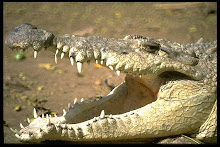Last night, a threat to feed Tarvis to Humboldt squids led to a Wikiquest that ended up with me learning an awful lot about globsters.
A globster is basically any blob of animal tissue that washes up on the beach with no distinguishable features or bone structure, making it difficult to identify. (There are, as of yet, no records of a live globster sighting, which is unfortunate) DNA tests later reveal that most globsters are decaying whale carcasses.
Yeah. Sure they are.
There is also a list of famous globsters. Um, I'd work on my definition of "famous," because I'll bet if I took a poll of the next 50 people I interact with, none of them will have heard of the infamous Hebrides Blob of 1990.
Disappointing: the Four Mile Globster. (Hint: it's nowhere near four miles long)
American researcher Charles Fort claimed that the truth about globsters has been covered up by popular science and world governments, and that their discovery is actually evidence of supernatural forces at work in our world. (You can read all about it in his cheerfully-named The Book of the Damned, which I'm tempted to add to my reading list, but as it's already sixty books long and I have fifty-eight to go, Fort may have to wait for the next go-round)
So now you know a little bit about globsters. (Who's up for writing an awesome Globster short story/novel/stage musical with me???)
